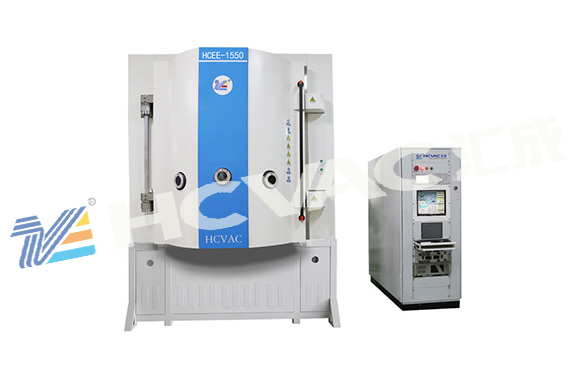Optical high-tech has gradually penetrated into all walks of life, and people's lifestyles have also undergone earth-shaking changes. With the changes of the times, optical coating technology is a very important part of it, such as daily mobile phone planes, cameras, displays, and Touch screens, etc., are all applied to optical coating surface treatment technology, which has also attracted special attention from the people. It allows us to feel the convenience of technology and the high-end visual impact it brings. So many people are full of curiosity about optical pvd coating machine. Here is a summary The editor of Cheng Vacuum analyzes the structural components of optical pvd coating machine for everyone, hoping that everyone will have a new understanding of optical pvd coating machine.

The basic structure of the optical pvd coating machine consists of a vacuum system, an evaporation system, a cooling system, an electrical system, and an electric control cabinet. The vacuum system consists of a vacuum chamber and an exhaust system. The vacuum tank is the main body of the coating machine. The coating process is completed in the vacuum tank. The vacuum tank and the exhaust system are connected through a connecting valve. In order to prevent the influence of air molecules on sputtered ions and improve the quality of the film layer, the optical components and ion source must be placed in a vacuum environment during work. The exhaust system is mainly composed of mechanical pumps, Roots pumps and vacuum pumps, which are responsible for discharging the gas in the vacuum tank and forming a vacuum environment in the tank. The evaporation system mainly refers to the film forming device part. There are many kinds of film forming devices in the coating machine, such as resistance heating, electron gun evaporation, magnetron sputtering, radio frequency sputtering, ion plating, etc.
The optical pvd coating machine coats thin films on optical components through vacuum sputtering, thereby changing the reflectivity and transmittance of the components to incident light. At the same time, in order to reduce the reflection loss on the component surface as much as possible and improve the imaging quality, multi-layer films are often coated. After the optical element is coated, the light is reflected and transmitted multiple times on the surface of the multi-layer film, forming multi-beam interference. By controlling the thickness and refractive index of the film layer, different intensity distributions can be obtained. This principle can be used to manufacture polarizing reflective films, color spectroscopic films, luminescent films and interference filters to meet more complex needs.
The application fields and advantages of
optical pvd coating machine are that the optical film surface is smooth, and the refractive index between film layers can jump on the surface, but the refractive index within the film layer is stable. The temperature rise of the base part during the coating process of the optical coating machine is lower, so the optical coating machine can coat the surface of components that are more sensitive to temperature. For the coating of optical components, optical coating machines have higher precision, more uniform coating, and more stable optical performance. At present, optical coating machines have been widely used in optical communications, optical displays, laser processing, aerospace, AR (Augmented Reality, augmented reality), VR (Virtual Reality, virtual reality) and other fields.



